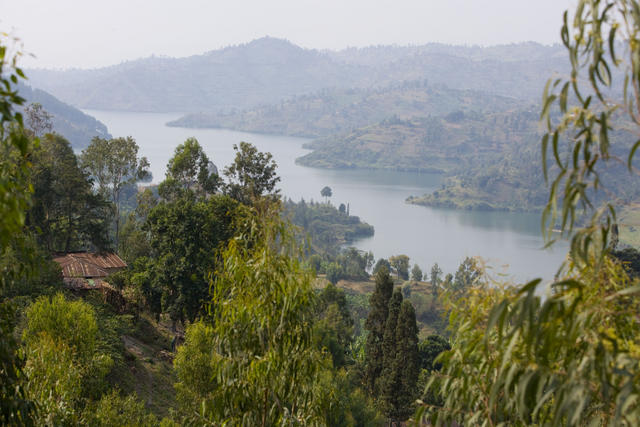
Further to the publication of the new Strategic Plan of Survivors Fund (SURF) for 2024 to 2028, we will be publishing several posts to provide more context of our work – and implications for the the survivors of the genocide against the Tutsi in Rwanda which we support.
Climate Change
Rwanda is divided into four main climatic regions: eastern plains, central plateau, highlands, and regions around Lake Kivu along the western border. Rwanda enjoys a tropical climate with hilly topography stretching from east to west. The Rwandan territory is covered with diverse ecosystems which includes mountain rainforests, gallery forests, savannah woodland, wetlands and aquatic forests and agroecosystems. Approximately 52% of the country’s total land area is arable and the total cultivated area equates to 66% of the national territory, with over 93,000 hectares of marshland under cultivation. With much small plot cultivation occurring on hills or mountain areas, increased runoff and landslides have been experienced, increasing the country’s vulnerability to climate change impacts.
Despite the country’s overall positive growth and development over the past 25 years, Rwanda is still highly vulnerable to impacts from climate change through its high dependence on rain-fed agriculture, as well as need to improve its road networks, health sector and water resource management. In Rwanda, the high levels of poverty and low degree of development limits capacity of poor households and communities to manage climate risk, increasing their vulnerability to climate-related shocks.
The ND-GAIN Index ranks 182 countries using a score which calculates a country’s vulnerability to climate change and other global challenges as well as their readiness to improve resilience. This Index aims to help businesses and the public sector better identify vulnerability and readiness in order to better prioritize investment for more efficient responses to global challenges. Due to a combination of political, geographic, and social factors, Rwanda is recognized as vulnerable to climate change impacts, ranked 124 out of 182 countries in the 2020 ND-GAIN Index. The more vulnerable a country is the lower their score, while the more ready a country is to improve its resilience the higher it will be.
Environmental commitments are guided by Rwanda’s Green Growth and Climate Resilience Strategy (2011) (GGCRS) and its National Strategy for Transformation (NST 1) (2017–2024). Rwanda is committed to ensuring its future stability and prosperity through mainstreaming climate change into all sectors of the economy and achieve climate resilience and low carbon development. Priority adaptation interventions have been identified as the sustainable intensification of agriculture; agricultural diversity in local and export market; sustainable forestry, agroforestry and biomass energy; ecotourism conservation and payment of ecosystem services promotion in protected areas, integrated water resources management and planning; integrated approach to sustainable land use planning and management, disaster management; and climate data and projections.
Implication for survivors and related vulnerable groups: The greatest issues facing survivors in respect to climate change relates to the challenges of developing sustainable livelihoods, many of which are based on agricultural farming which are very dependent on climatic factors. Also there has been significant risks to housing of survivors resulting from floods and mudslides. This also impacts on smallholdings of survivors as well.
